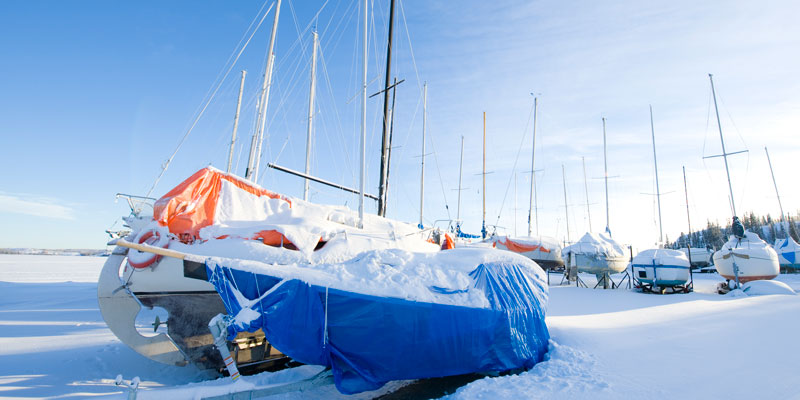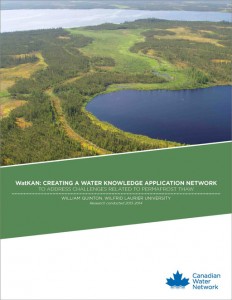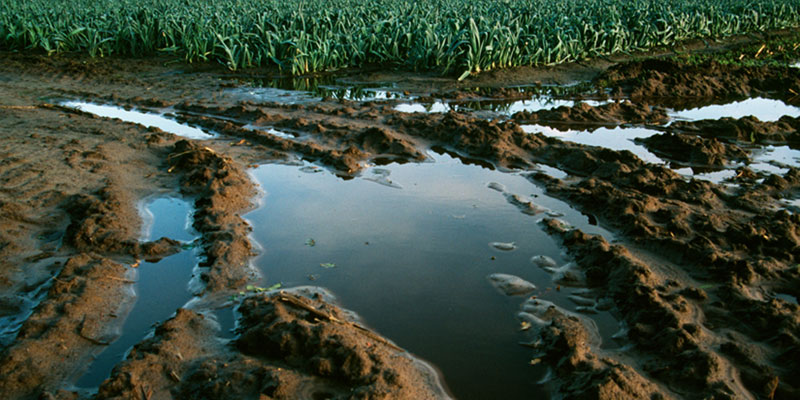Water Knowledge Application Network (WatKAN)
Principal Investigator - William Quinton, Associate Professor, Wilfrid Laurier University, 2013 - 2014

Challenge
Throughout the Northwest Territories (NWT), unprecedented warming and forest disturbances have generated widespread permafrost thaw, resulting in ecosystem changes. These changes have wide-ranging implications for society and the environment. However, the mechanisms, patterns, and rates of permafrost thaw and the resulting ecosystem feedbacks and transformations are poorly understood, thus impeding the ability of watershed managers to predict watershed storage and flows. This need was addressed by two projects that preceded the current proposal:
- Project 1 (2010-2013): Understanding and Prediction of Permafrost Thaw Impacts on Northern Water Resources: This project mapped the spatial distribution of discontinuous permafrost and its change over the past 60 years, developed models of hydrological processes underlying permafrost change, and developed a model of human-induced disturbances of permafrost. These models were linked to predict permafrost distribution and river flow. William Quinton, Wilfrid Laurier University.
- Project 2 (2012-2013): Regional Consortium for Permafrost Ecosystems in Transition: The models created in Project 1 were tested, improved, and incorporated into a common modelling platform (the Cold Regions Hydrological Model). A consortium concerned with permafrost thaw was developed. William Quinton, Wilfrid Laurier University.
This project seeks to build on the knowledge produced by the aforementioned studies. With the realization that traditional linear models do not work well at transferring scientific knowledge, there is an opportunity to develop knowledge applications which recognize the social dimensions of science in watershed management. Developing social networks between researchers and decision makers increases the likelihood that watershed managers will use scientific information in their decision making. Thus, by creating a Water Knowledge Application Network (WatKAN), predictive capacity is placed into the hands of decision makers, so that water resource decisions can be applied more confidently.
Project
The creation of a Water Knowledge Application Network (WatKAN) will bring together knowledge producers, end users, and experts in knowledge application to solve watershed management challenges arising from permafrost thaw. WatKAN will operate throughout the NWT, with a focus on the Taiga Plains eco-region, an area internationally recognized as a policy tipping point in the climate system.
WatKAN has the following objectives:
- Community Consultation: WatKAN will host meetings in communities throughout the Taiga Plains and in Yellowknife to exchange knowledge on the water resource impacts of permafrost thaw and identify end-user decision needs.
- Model Adaptation: knowledge of end-user needs will be used to modify existing predictive tools, where necessary, and to develop a flexible modelling interface with local communities.
- End-User Training: end-user communities will be trained on how to apply the Cold Region Hydrological Model (CRHM) to guide watershed management. Principal end-users include the Government of NWT and federal agencies intervening in the regulatory process, local communities including First Nations, and the Mackenzie Valley Land and Water Board. Two-way training will supplement information gleaned from community consultations by providing additional feedback.
- Application: modelling capability will be placed into local hands so that communities can examine the hydrological merits of their own, local adaptation strategies to permafrost thaw and disappearance. WatKAN will provide assistance towards examining scenario outcomes, assessing outcome uncertainties, and filling in knowledge gaps.
Outcomes
In 2009, the Government of NWT issued a call for research on water resources. Projects 1 and 2 were a direct response to this request. The focus of discussion has since evolved to the need for application of the knowledge and its associated decision-support tools, which this project seeks to satisfy. WatKAN will reduce the uncertainty of the future availability and quality of northern water resources resulting from permafrost thaw and will provide a rigorous scientific basis for management strategies by contributing to the following areas of watershed management:
- Understanding and predicting long-term changes to water resources resulting from permafrost thaw
- Understanding and predicting short-term changes to water resources in response to hydrological events, such as spring flooding and rain events
Knowledge application within the Government of NWT will focus on the implementation of a
a) Water Strategy;
b) Climate Change Adaptation Framework; and
c) Forest Renewal Strategy
Applications of WatKAN will become ever more relevant to watershed management in the NWT as unprecedented climate warming and industrial development increasingly affect water use and reuse in activities, such as potable water supply, hydro-electric generation, industrial water use, and wastewater treatment.





